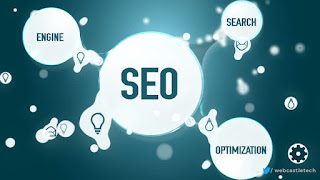What software is used for ERP?
Enterprise resource planning (ERP) software has become a pivotal investment for companies of all sizes looking to unify data and processes. However, the crowded ERP marketplace presents an overwhelming array of options complicated by technical jargon and vendor claims.
For business leaders across manufacturing, distribution, retail, healthcare, finance and other verticals in Kerala, navigating this complex software category poses key challenges. How do you differentiate true technology partners from flashy imposters? Which capabilities constitute “must-haves” versus “nice-to-haves” based on your organizational maturity, budget and IT infrastructure? We’ll cut through the confusion surrounding ERP software and providers to help you select the ideal system correlating to your strategic growth roadmap.
Defining ERP Software Capabilities
At its core, ERP software integrates currently siloed business operations – be it finance, inventory, production, sales or human resources – onto a unified cloud-based or on-premises IT platform centralizing access to data and workflows company-wide. While early ERP suites focused heavily on manufacturing resource planning (MRP), contemporary options deliver end-to-end operational visibility.
Common ERP Capabilities and Modules:
● Financial Management - general ledger, cash flow, accounts payable/receivable, fixed assets
● Supply Chain Management – inventory, warehouses, procurement, production planning
● Order Management - quotes, orders, billing, credit checks, returns
● CRM and Sales Automation – contacts, pipelines, campaigns, commissions
● HR Management - recruitment, payroll, time sheets, benefits administration
● Business Intelligence and Reporting – KPI dashboards, ad-hoc reports, budgeting
● Compliance Controls - data security, access controls, audit logs
Depending on the provider, solutions may exist as independent modules allowing custom configurations or pre-bundled all-in-one systems. Cloud architecture however allows easier toggling of capabilities on/off as needs evolve.
Comparing ERP Software Delivery Models
Beyond breadth of tools, organizations must evaluate contrasting technology architectures and pricing models to identify the optimal balance of ownership and flexibility:
On-Premises ERP Historically popular across enterprises, on-premise ERP require dedicated infrastructure with large upfront costs for perpetual software licenses, servers, installation services and IT staff to maintain systems internally. However, this allows full customization and control.
Hosted ERP A hybrid model where software still gets installed on company servers and databases without internal IT staff. Vendors host hardware within their own data centers easing the burden while providing 24/7 managed services.
SaaS ERP As a native multi-tenant cloud model accessed via web browser, SaaS ERP solutions simplify rollout with no hardware requirements. Subscription-based pricing enables smaller ongoing costs rather than massive one-time capital expenses upfront. However, customization gets limited.
Based on IT sophistication, budget, risk appetite and user profile spanning employees, partners and customers, Kerala businesses can weigh the optimal ERP deployment method.
Examining Top ERP Vendors in India
While hundreds of ERP platforms exist globally, roughly 8-10 providers lead market share across India including both international names and domestic solutions catering to SMEs. We highlight leaders across key segments:
Large Enterprises – SAP, Oracle, Microsoft Global giants SAP, Oracle and Microsoft continue to dominate the enterprise ERP category particularly for complex multi-national corporations. Feature-rich applications enable extreme customization but prove very expensive and resource intensive for most.
Midsize Firms – Sage, Epicor, SYSPRO For mid-market companies scaling operations beyond basic accounting needs, Sage, Epicor and SYSPRO deliver robust Tier 2 ERP functionality at reasonable costs. Industries like manufacturing and distribution favor these.
SMEs and Startups – Tally, Marg, Busy Homegrown favorite Tally along with newer challengers Marg and Busy simplify ERP software specifically to automate financial operations for smaller Indian businesses. However, their functionality remains basic.
While marquee vendor names instill confidence, identify solutions mapping closest to your workflow requirements, IT infrastructure, budget and skill levels before shortlisting options.
Key ERP Software Evaluation Criteria
Defining business requirements even before requesting demos streamlines your ERP evaluation and selection considerably. Beyond analyzing technical capabilities, assessing critical factors below ensures long-term solution fit:
● Vertical-Specific Functions – Does the system cater to industry-specific processes like quality control in manufacturing or patient billing in healthcare?
● Deployment Timeframes – SaaS systems can launch within weeks while on-prem enterprise installs run over months. Map options to urgency.
● Implementation Support – What level of migration services, testing and training gets included across vendors?
● Scalability – Can the platform easily scale from 20 to 200+ users while keeping performance consistent?
● Total Cost of Ownership – Compare both recurring subscription fees + indirect expenses like IT, customizations and training over 5 years.
● Service Partnerships – Review the accessibility, responsiveness and scope of vendor customer support models before committing.
Finally, don’t simply believe vendor claims at face value. Ask for customer references and read online reviews across credible sites like Gartner Peer Insights to ascertain real-world experiences comparing solutions. This prevents overpaying for more complexity than a business actually requires today just due to slick marketing. Verify product-market fit directly via peers in your industry.
Selecting best ERP software in kerala marks a pivotal business decision impacting day-to-day operations company-wide. While flashy capabilities tempt leaders striving for rapid digital transformation, stay grounded in genuine needs today while keeping future goals in perspective. The most “advanced” technology proves pointless if not usable comfortably by staff across all levels.
By carefully defining must-have versus nice-to-have criteria spanning features, delivery models, vertical alignment and total ownership costs based on the maturity, budget and skill levels of your Kerala organization, you can identify the perfect-fit ERP system as a foundation for scalable efficiency and insights moving forward.


Comments
Post a Comment